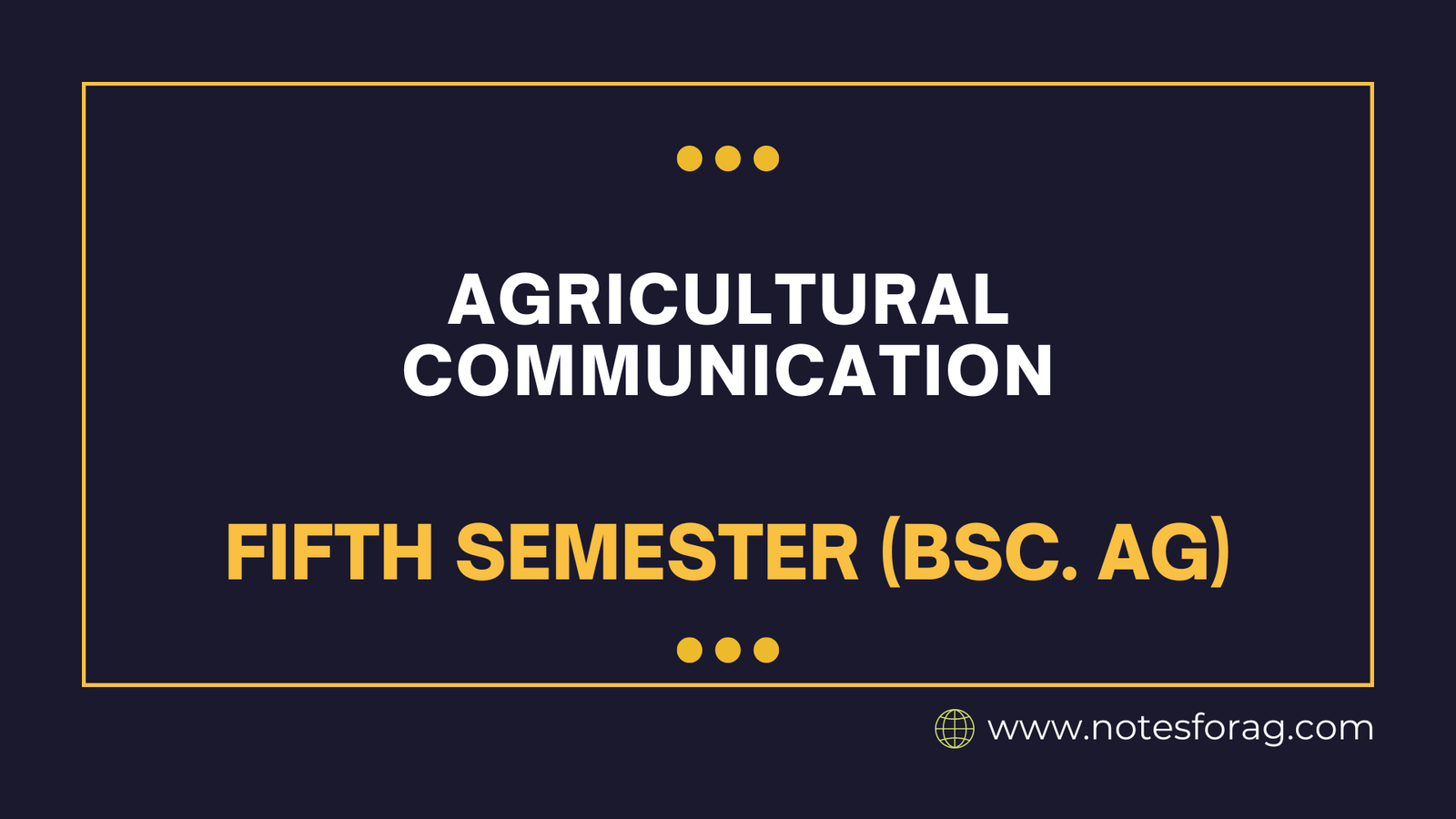| Course Code | EXT 303 |
| Course Title | Agricultural Communication |
| Credit Hour | 3(2+1) |
| Full Marks | 75 |
| Theory | 50 |
| Practical | 25 |
Objectives
Upon the completion of this course, the students will be able to understand the basic concept of communication, their principle, method, type system and media preparation etc, and ability to apply the agricultural communication knowledge disseminate to the farming community.
Syllabus of Agricultural Communication in Bsc. Agriculture
Meaning, concept, definition scope and type of communication, their process, and function role in agricultural development. Element, process, and model of communication. Feedback, barriers, and theory communication its type and approach. Planning for effective communication. Present trend, issues in agricultural communication. Communication in the satellite system, the role of governmental and non-governmental agencies agricultural communication development.
Course Outline
A. Theory
| S.N | Topic / Chapter Name | No. of Lectures. |
| 1 | Meaning, concept, definition, the scope of communication | 1 |
| 2 | Role/function, process, and elements of communication | 2 |
| 3 | Forms of communication | 2 |
| 4 | Feedback in communication | 1 |
| 5 | Models of communication | 2 |
| 6 | Barriers of communication: – Physical, psychological, social and cultural | 2 |
| 7 | Theories of communication | 2 |
| 8 | Principles of effective communication | 1 |
| 9 | Type of communication system 9.1 Individual communication system 9.2 Group and mass communication system 9.3 Audio-visual aids and cone of experience in communication | 3 |
| 10 | Communication policies linked with national and international agencies | 1 |
| 11 | Analysis and Planning effective communication in agricultural development | 2 |
| 12 | Recent strategies of communication in agricultural development | 1 |
| 13 | Information Communication Technologies (ICT) 13.1 Concept of ICT and its role in agriculture and rural development. 13.2 ICT tools- print and electronic media, social media, e-mail, Internet 13.3 Use of multimedia, use of mobile phone, video and teleconferencing, computer-assisted instructions, web technologies and information booth. | 4 |
| 14 | New trends and issues in agricultural communication, media – mix | 1 |
| 15 | Public speaking for effective communication | 1 |
| 16 | Characteristics and Role of Non-government organization (NGOs) in extension | 1 |
| 17 | Role of private, governmental, and non-governmental agencies in agricultural communication development | 2 |
| 18 | Academic and general writing for effective communication | 1 |
| Total | 30 |
B. Practical
| S.N | Topic / Chapter Name | No. of Lectures. |
| 1 | Graphics in communication – Line, Bar, Pie and pictorial graphs | 1 |
| 2 | Preparation of various kind of charts – Flow, tree, suspense, flip etc. | 2 |
| 3 | Preparation of pamphlet, leaflet and booklet | 2 |
| 4 | Preparation of poster and pictorial book | 1 |
| 5 | Preparation of radio script, drama and folksong | 2 |
| 6 | Preparation of powerpoint slides and presentation | 2 |
| 7 | Communication through bulletin | 1 |
| 8 | Observation and safety use of projector and film/ movie projector | 2 |
| 9 | Observation and participation in fair, exhibition, field day, tour etc. | 1 |
| 10 | Visit different agricultural agencies, local radio and 1 Television station | 1 |
| Total | 15 |
Reference
- A.S. Sandhu. 2004. Textbook on Agricultural Communication Process and Methods. Oxford & IBH.
- B. Kumar and B. S. Hunsra. 2000. Extension Education for Human Resource Development Concept Publishing Company, New Delhi, India
- C.S. Rayudu.2002. Communication. Himalaya Publ. House.
- G.L. Ray. 2006. Extension Communication and Management. Kalyani Publ.
- Herbert F. Lionberger and Paul H. Gwin.1982. Communication Strategies – A Guide for Agricultural Change. University of Missouria, Colombia.
- O.P. Dahama and O.P. Bhatnagar. 2005. Education and Communication for Development. Oxford & IBH.
- P. Oakley and C. Garforth. 1985. A Guide to Extension Training. University of Reading UK.

